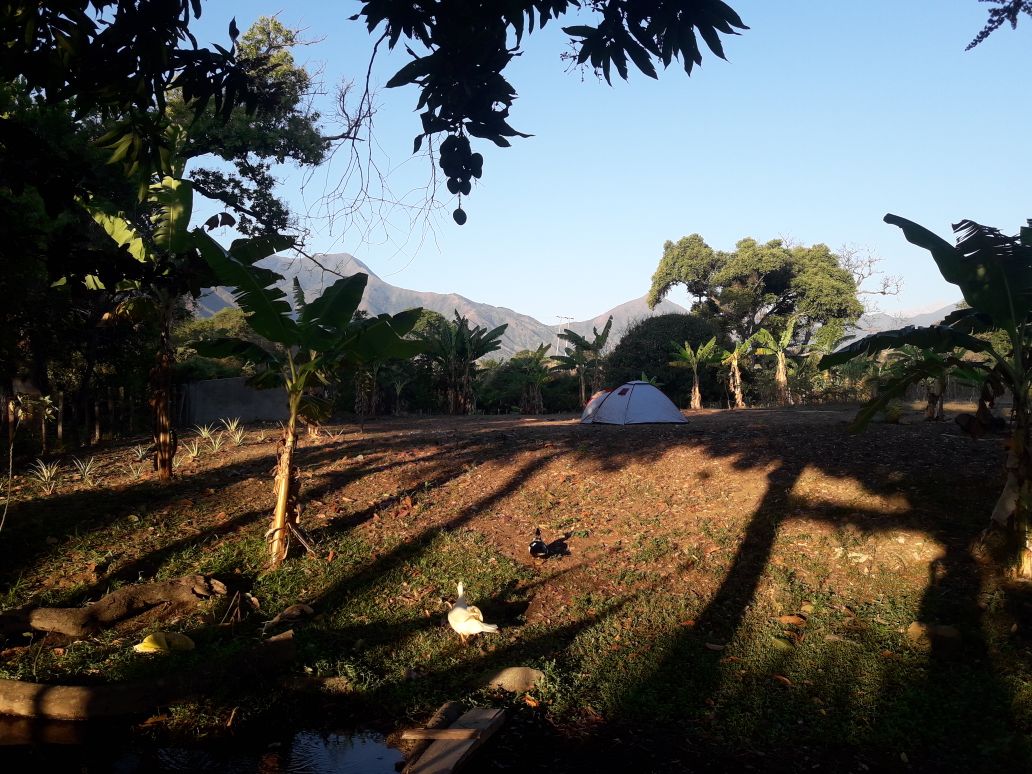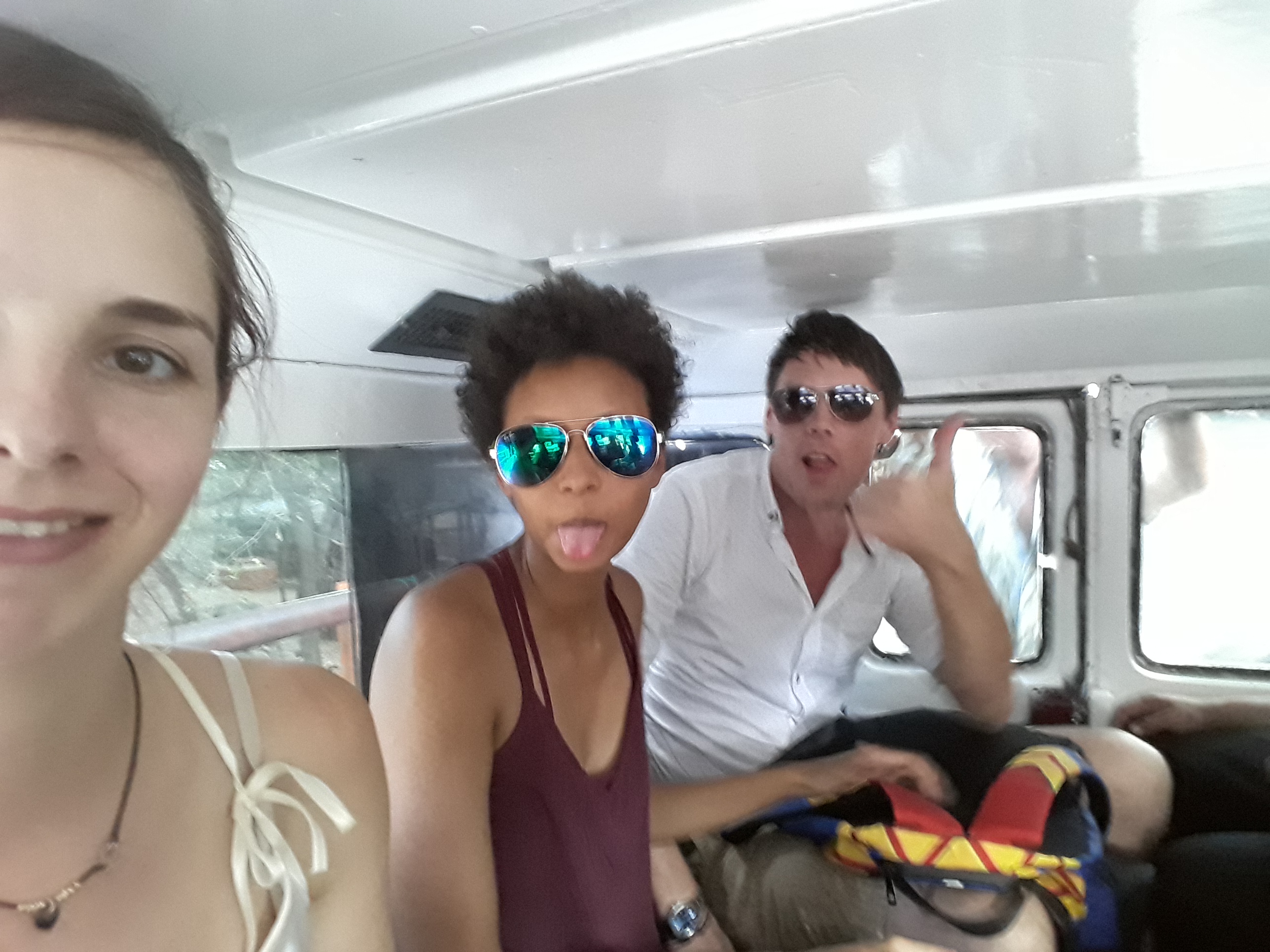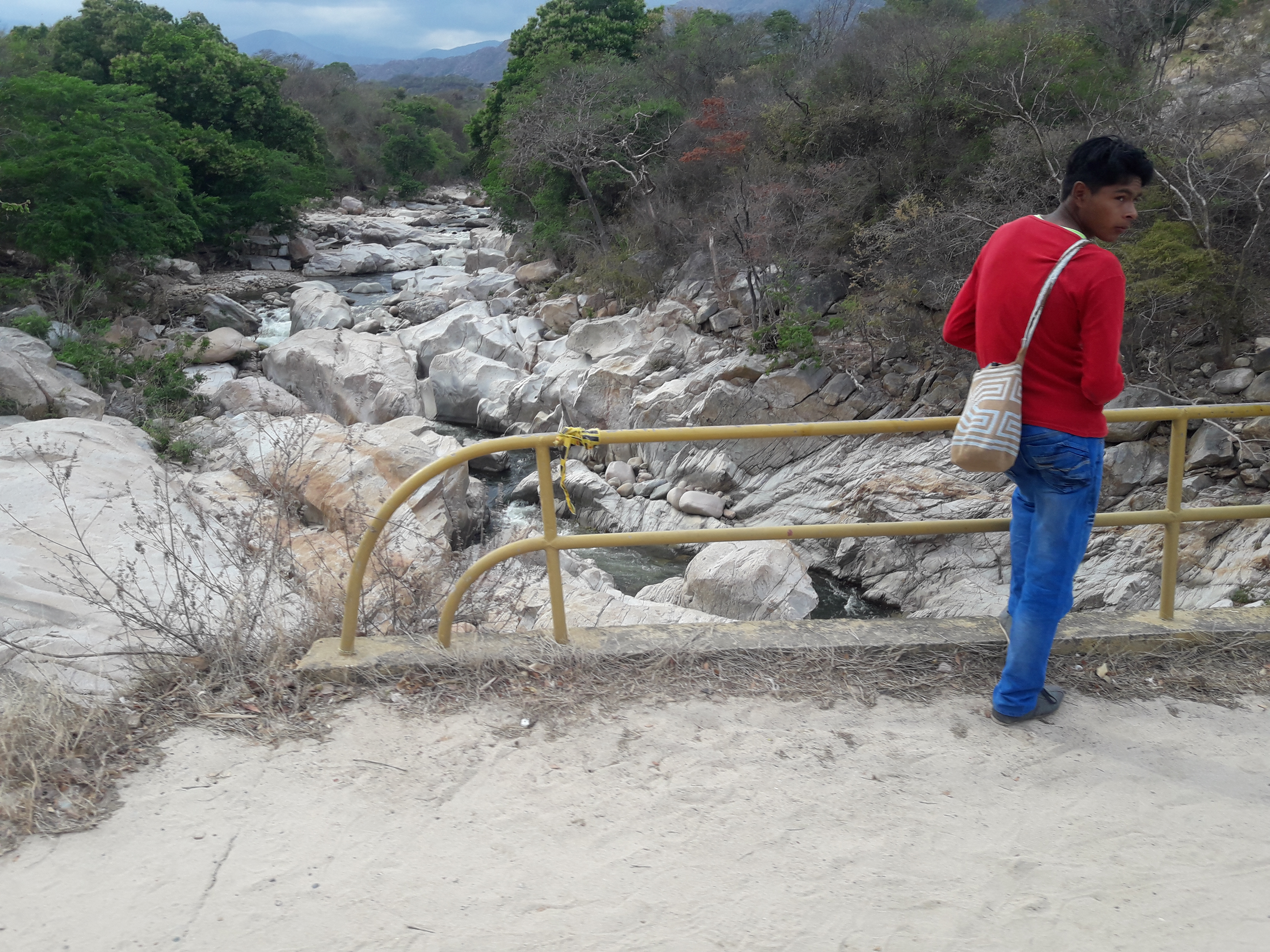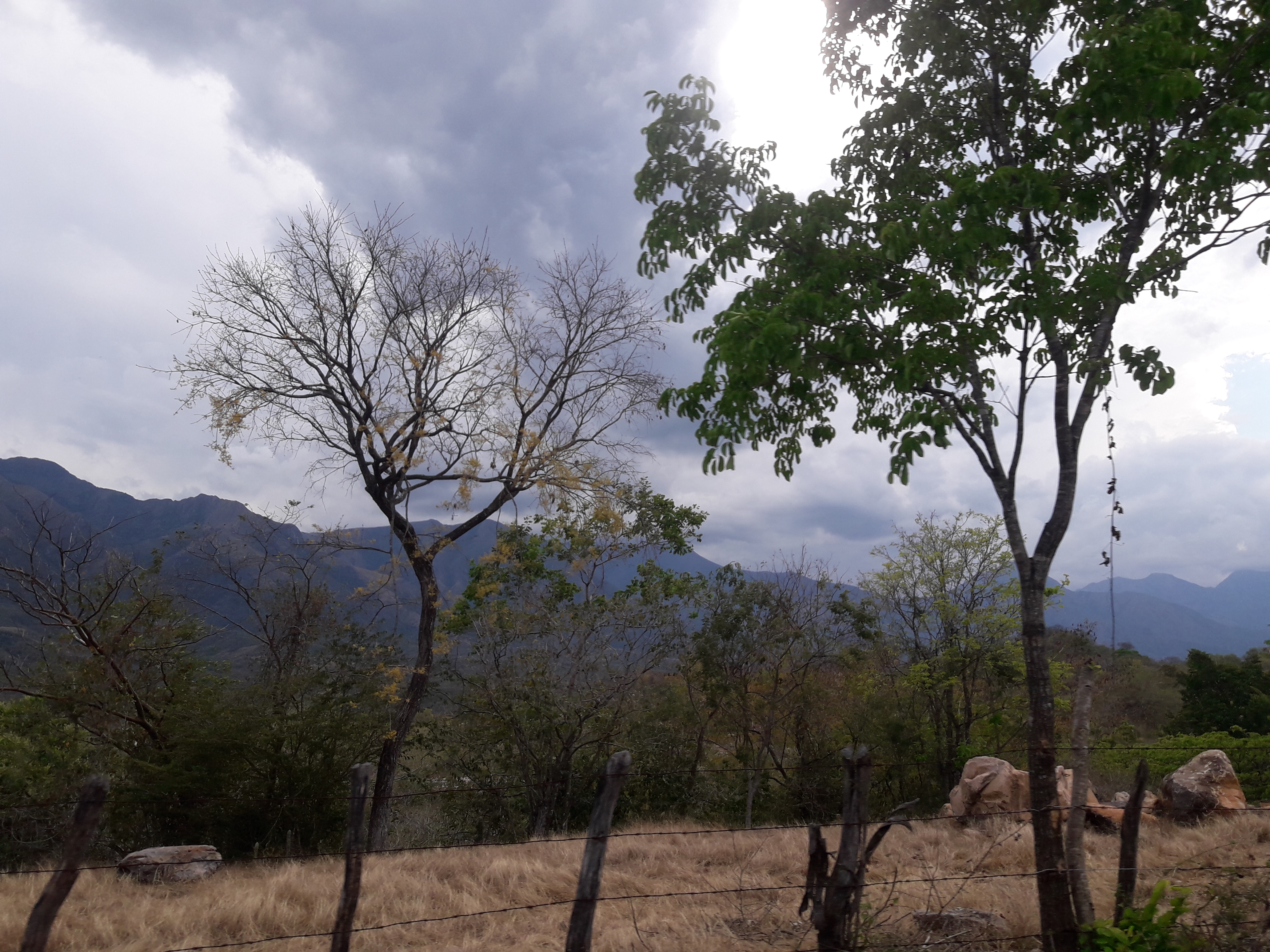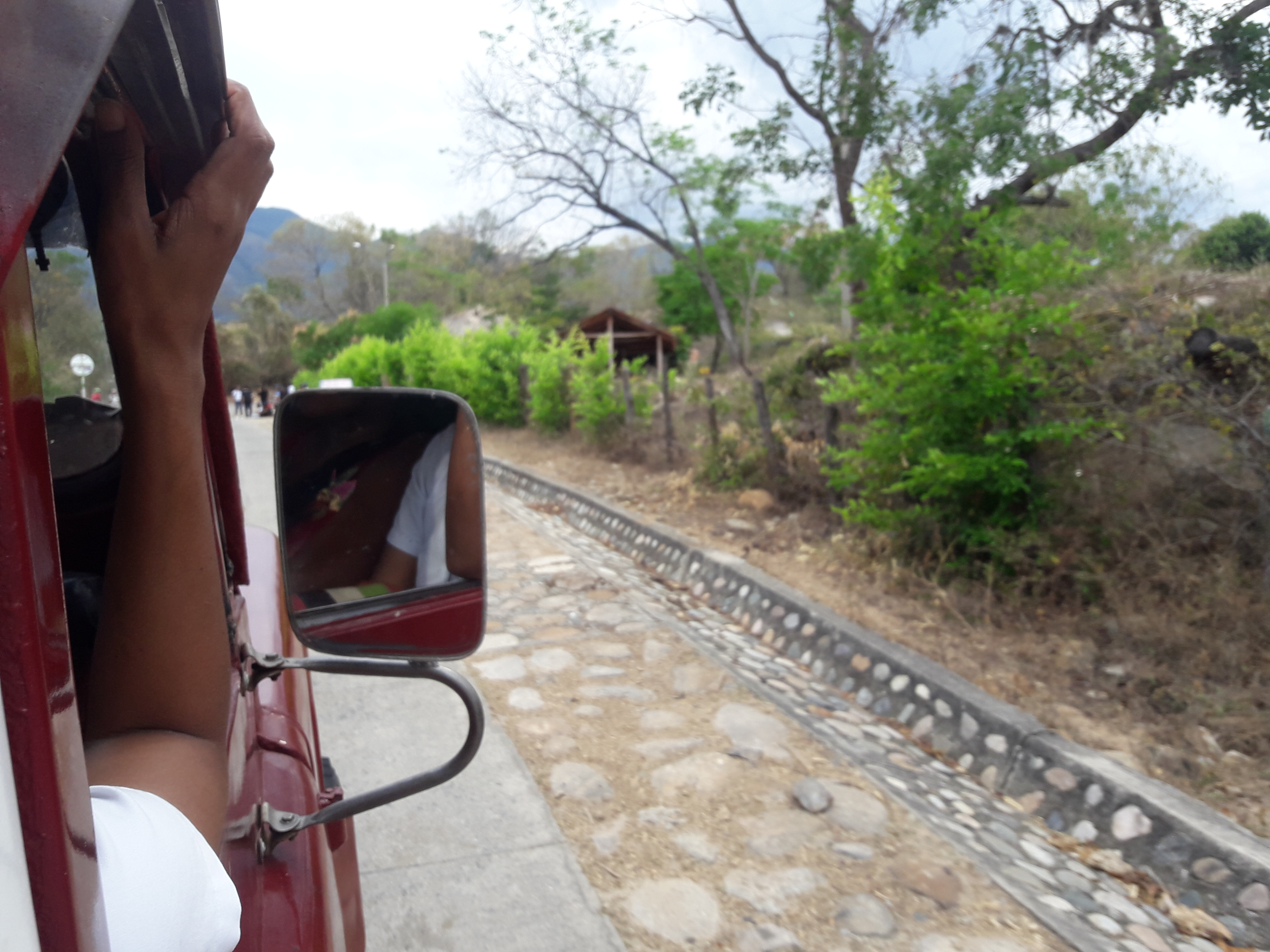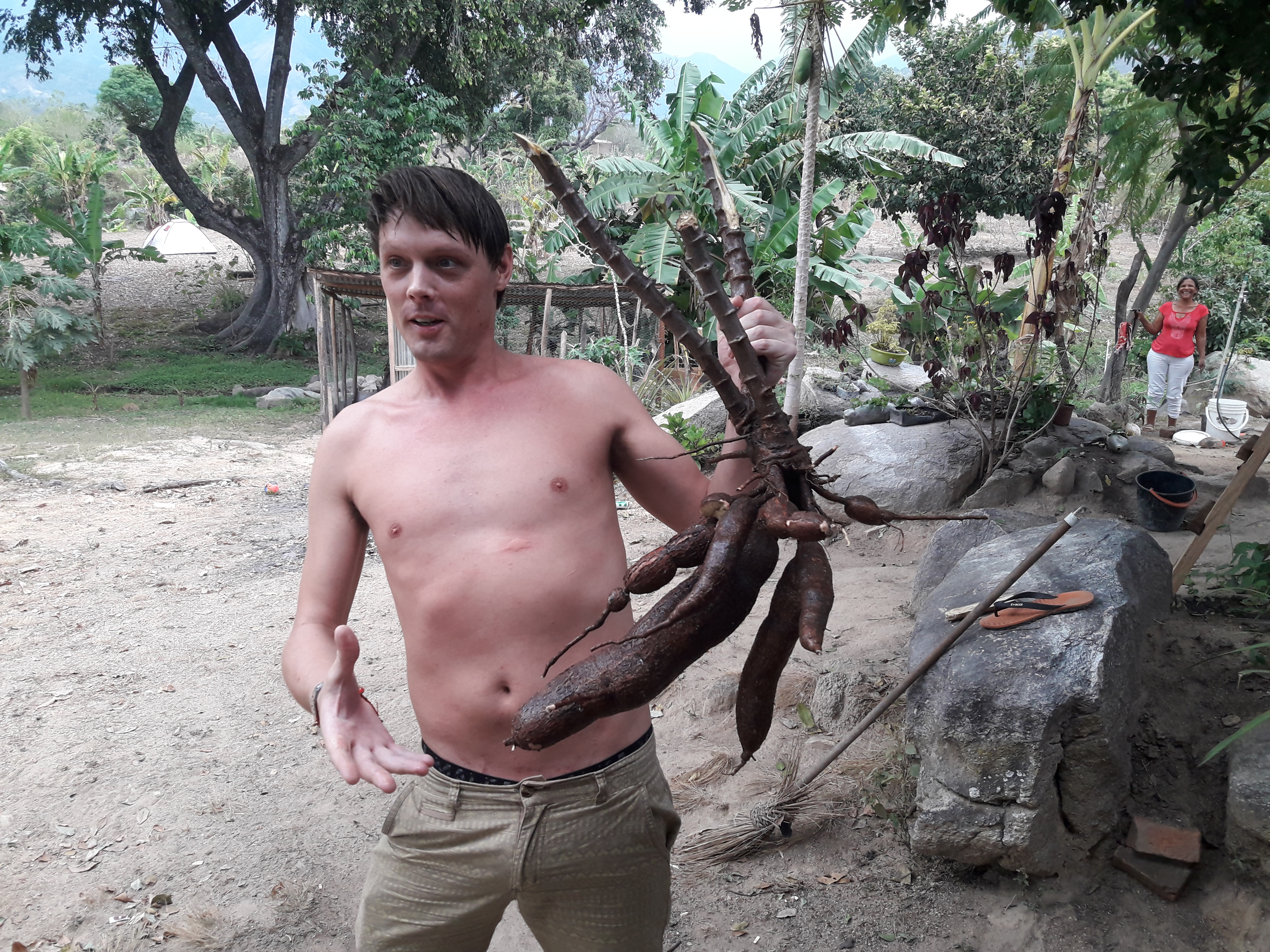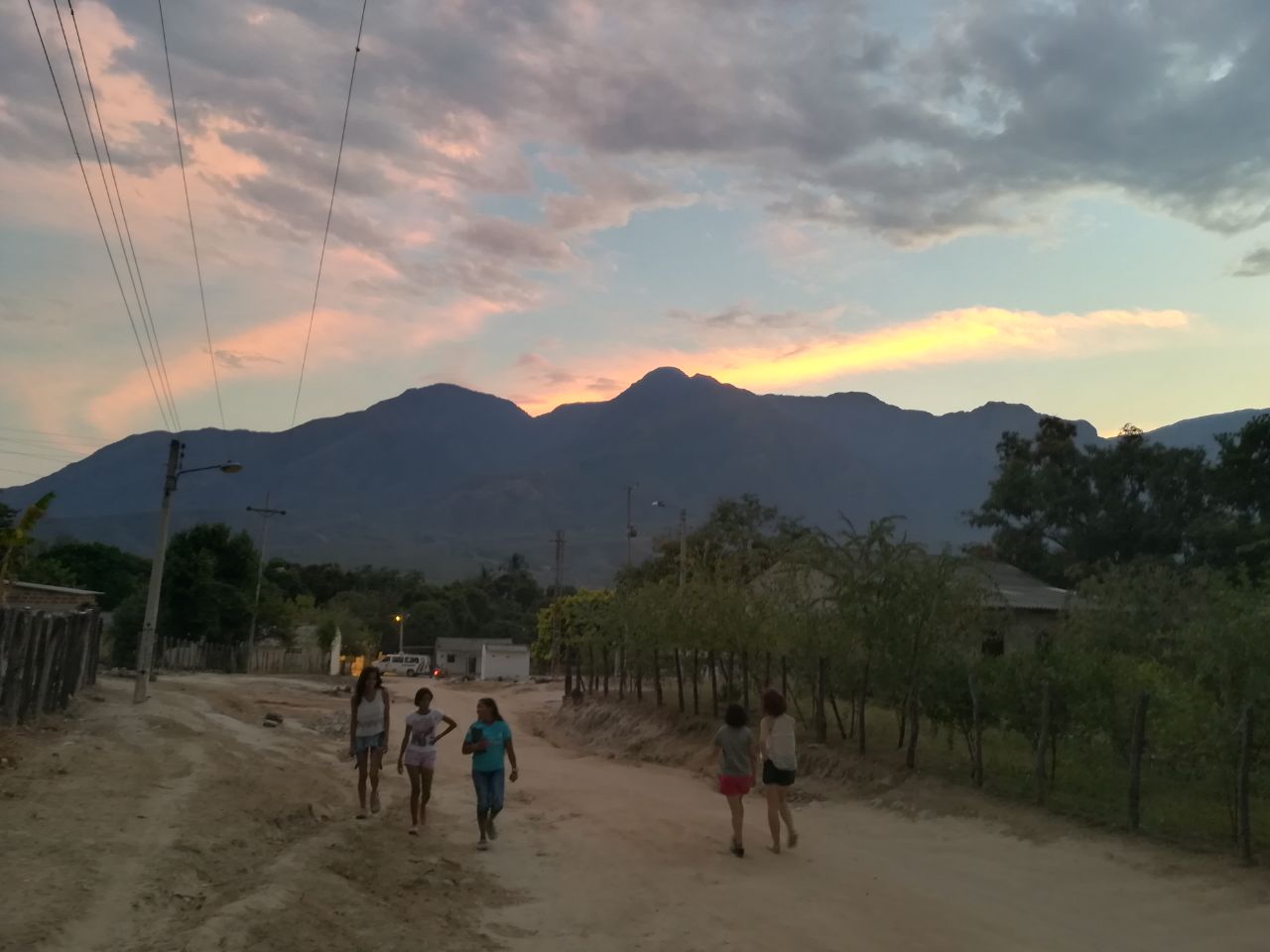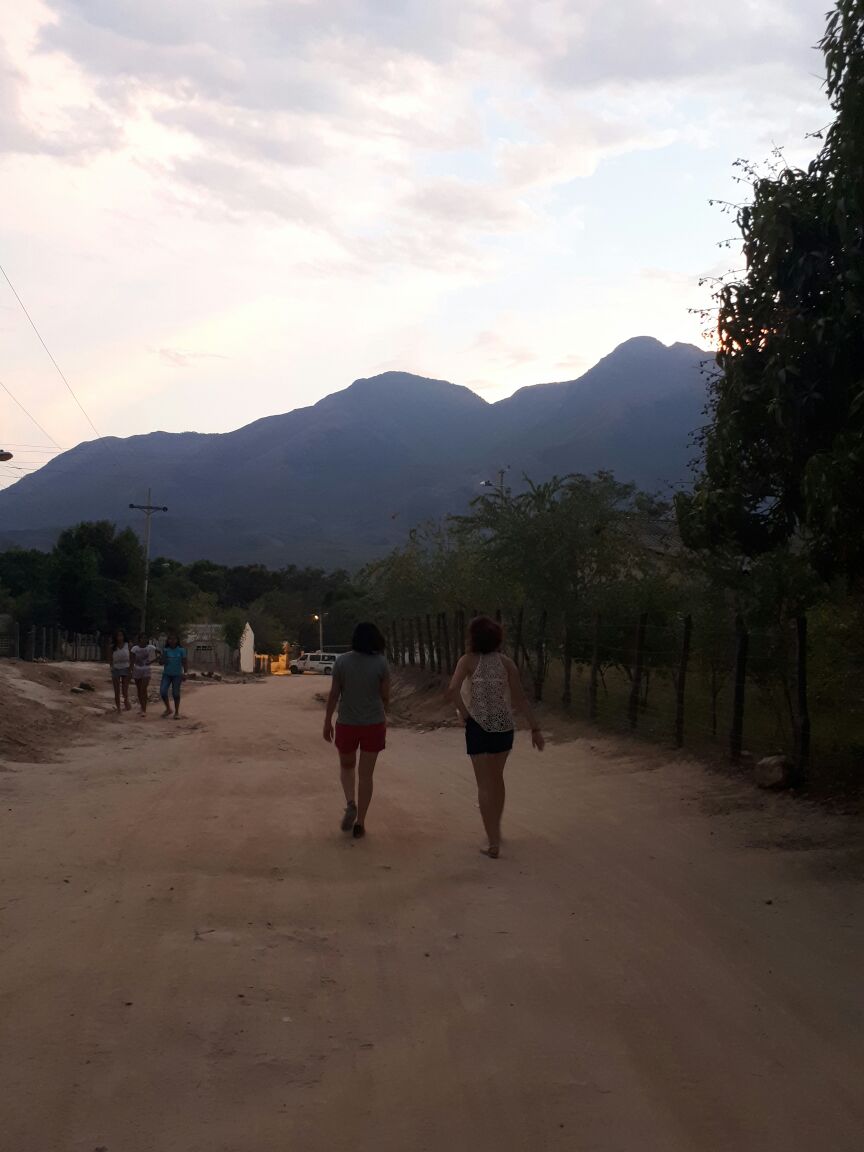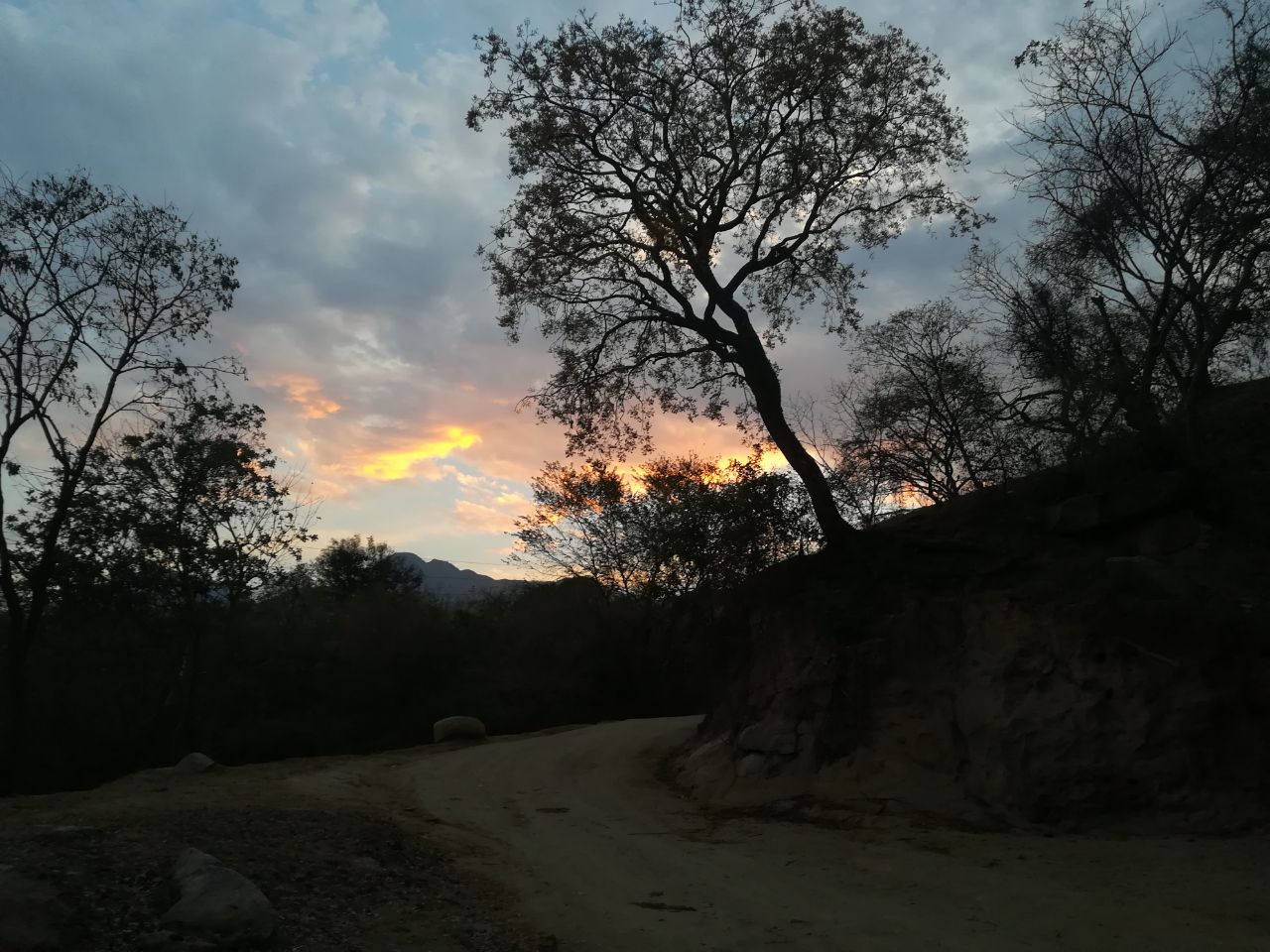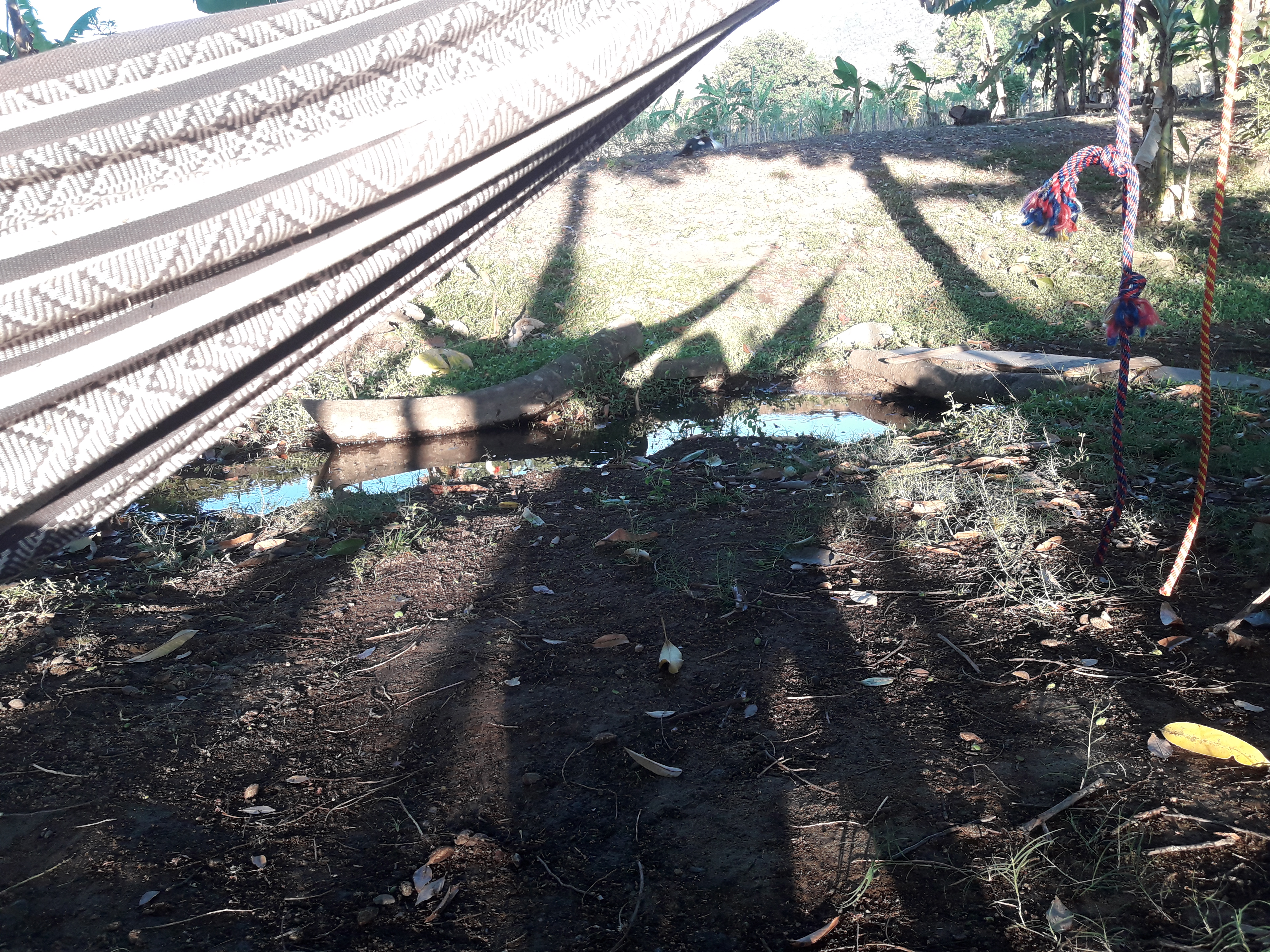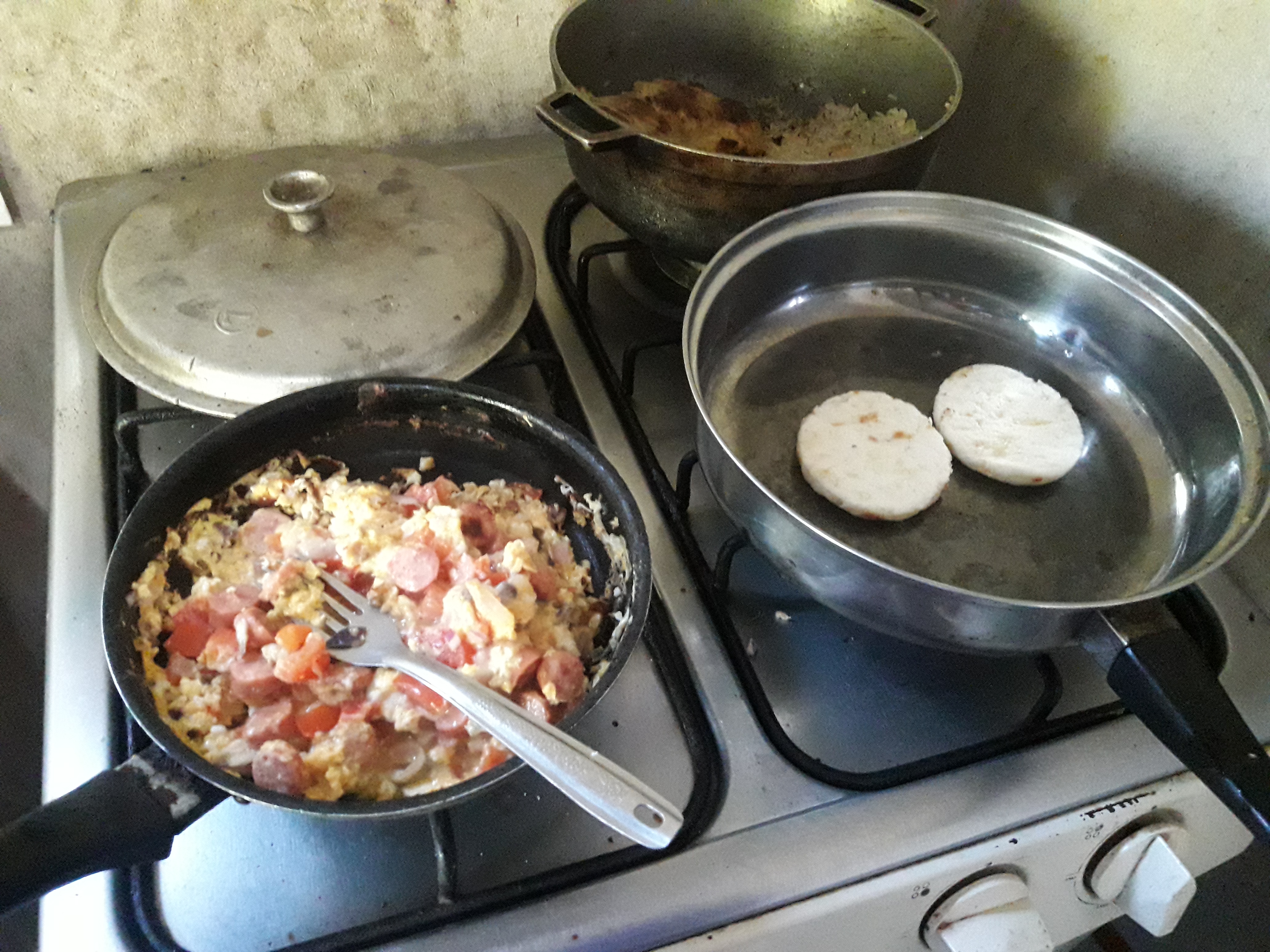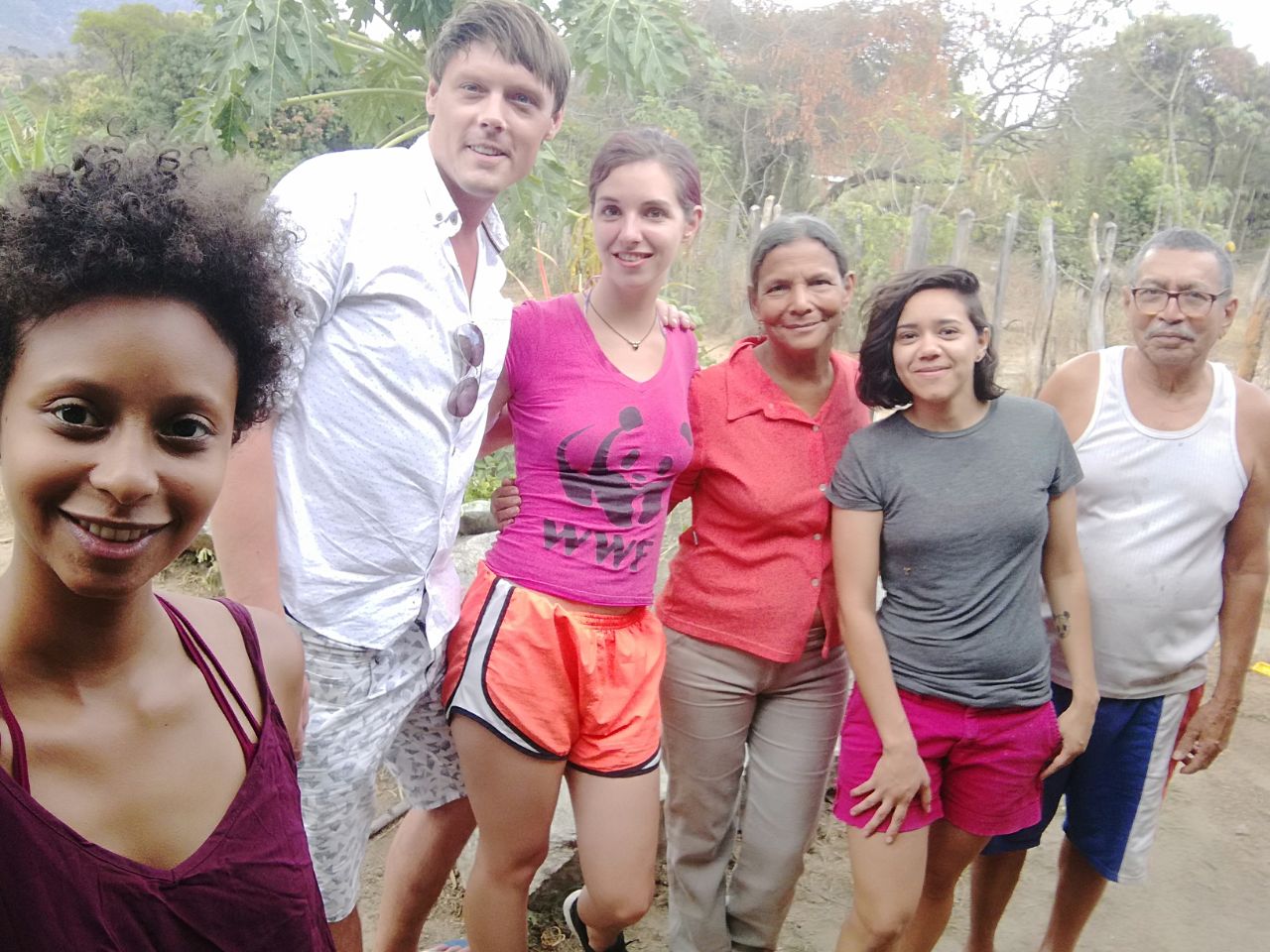Finally! Some inspiration to publish travel content, brought to you by my first paseo (short/roadtrip) of 2021 in Colombia!
Let’s start with the facts:
Town: Pueblo Bello, Cesar, Colombia
Lodging: Migracampi (just say “donde John” to the driver — they’ll know where to drop you off)
Distance: 53 km, about an hour from Valledupar (the capital of Cesar)
Transportation: bus or Coomaple Colectivo ($15.000/~$5 USD per person)
Style: Camping/Glamping
Prices: 35-40.000 pesos (~12-14 dollars)/night
Breakfast, coffee, and tea Included
Food and drink available to buy on site (including beer! and other more “exotic” local spirits)
Host: John Alvarez (@migracampi)
Now that I’ve gotten the key info out of the way, let me narrate my incredible experience with Migracampi.
This was my second time staying at the backyard campsite. It had been just over a year ago when I first decided to explore. My third time going to Pueblo Bello.
Pueblo Bello, although a small town, is something of a cultural crossroads between the indigenous cultures under the “Arhuaco” cultural umbrella that live in and around the Sierra Nevada and the post-colonial mainstream Colombian culture. And then people like me, foreigners from all over the world that have been drawn to these little-spoken-of gems hidden among a kaleidoscope of more “developed” tourist attractions in the country.
The creator of Migra, John, is acutely aware of the cultural and ecological significance of the space he inhabits. He paves the way as an entrepreneur who has managed to grow his space greatly within the course of a single year. In fact, he never seems to tire of his various projects to expand on the sustainable mission of his lodging and tour ecotourism services.
Let me start from the beginning. To get to Pueblo Bello from Valledupar, my friend and coworker Carin and I only had to take a taxi to downtown Valledupar. Near an outdoor shopping center called La Galeria, in an alley-like street bursting with venders of fruits, vegetables, clothing, and even school supplies, you can find several transportation offices.
The one we were looking for was easy to spot — Coomaple. We walked in, gave our names, and were quickly instructed to load a white truck by the driver. We paid the driver the 15.000 peso fare once we got to Pueblo Bello — after picking up two and a half more passengers (including their adorable white puppy, Aaron).
The ride up through the mountains leading to the Sierra Nevada is twisted and gave me a bit of motion sickness on the way up, but “luckily,” the truck got a flat tire. While the driver used rocks in the place of a car jack, I sat on the curb of the road, trying to remind myself that things like this happen in Colombia all the time. A flat tire on a sloped incline should be the least of my concerns!
The greenery and blooming flowers welcome you into Pueblo Bello. Unlike in Valledupar, it has been raining regularly. The air is crisp and fresh. The sound of birds fills your ears from all sides. For those that appreciate it, like my friend Jose, it is the perfect place for bird-watching and spotting varieties of birds unique to the region.
We were greeted by John upon arrival. I felt like I was being welcomed home by an old friend — secret handshake and all. A native of Pueblo Bello, John has a sort of energy that makes you feel immediately relaxed and open. He’s just a genuine person, on top of being an earnest host, and a fantastic trail/tour guide.
He showed us our lodging, which exceeded our expectations – even mine having stayed at Migra before. When I visited Migra for the first time a year ago, I had opted for the simple tent experience. The tents are set up by John and include a sleeping pad, bedding, and a flashlight. They are comfy and minimalist. However, this time I had opted to try the “Glamping” experience.
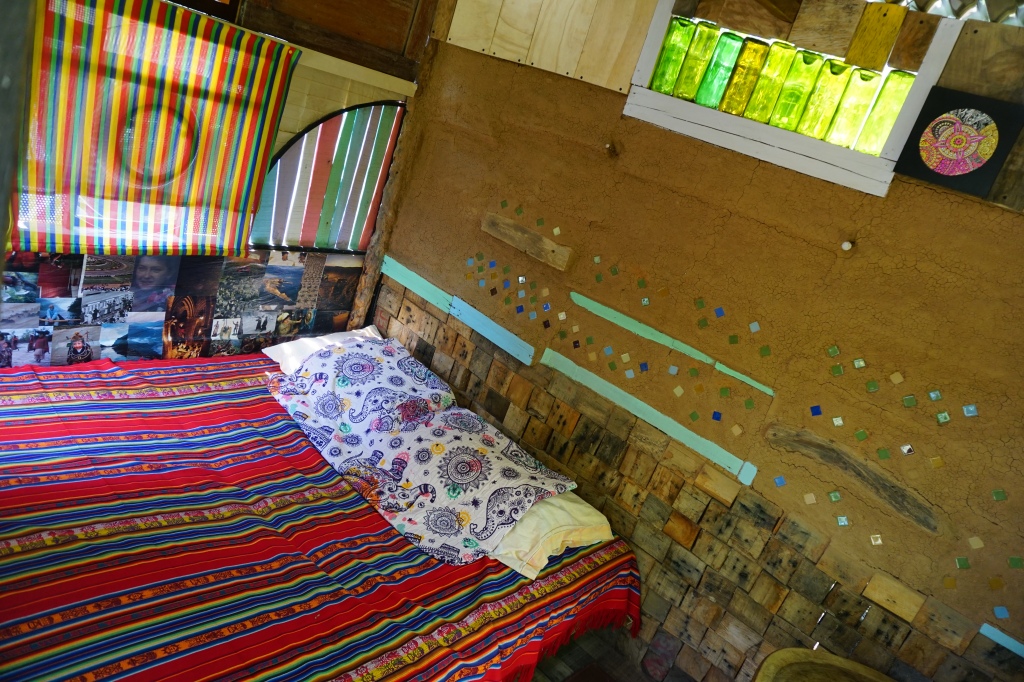
Products of his ingenious crafting abilities, John offers two mini homes, cabins made from recycled materials. The windows shine green as the light hits repurposed beer bottles which have been set in the place of glass windows to allow for air to constantly circulate within the cabin. The two cabins sit on different sides of the enclosed camping space. One is made for an individual and the other can fit two people in a queen-sized bed. The decorations are impeccable, reflecting the same attention to detail that you can observe and appreciate around the entire space.

Every personal touch makes sense while creating an inviting, familiar atmosphere. In the middle of camp, there is a public sink with a mirror and handsoap, additional to the two bathrooms with sinks, showers, and mirrors of their own. There is a garden with chairs set up perfectly to enjoy the sunset and sounds of nature or even a smoke, if that’s your fancy. John even dabbles in beekeeping and has his own bee house of friendly bees on the grounds. The signature bar to the left of the entrance continues to be the hub where music plays, and food and drink are offered at low prices that belie their quality.

Even a simple sandwich displays John’s individual style and attention to detail.
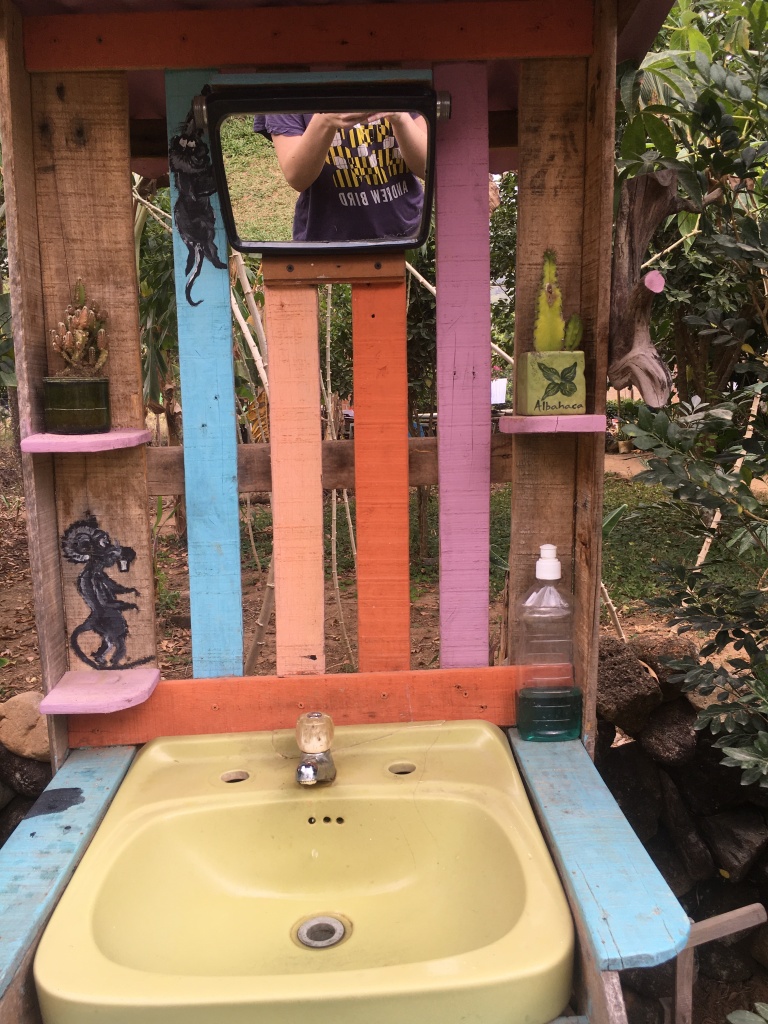
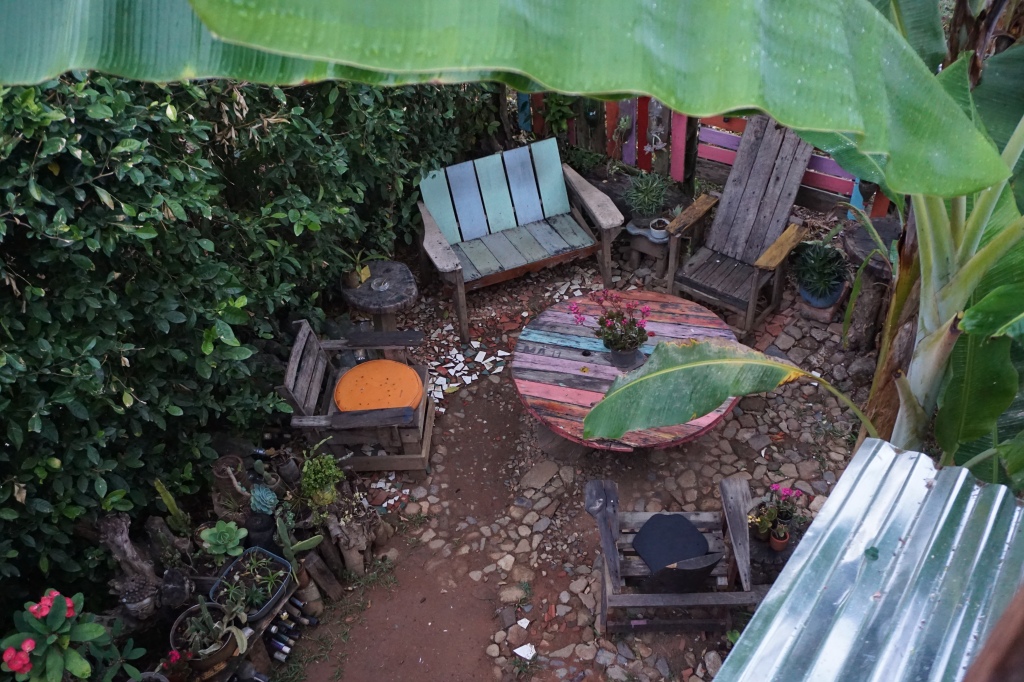
With so much to offer, I had not imagined how much more I would find this time around, only a year later. As I noted, John had not taken a day off. Now the Migra campgrounds include a treehouse deck (which will eventually be converted into a cabin) with hammocks hanging in a chill space underneath. This area is cleverly furnished with plants and books, just like the other spaces of Migracampi. We rested and ate in the shade, waiting for our other friends to arrive before going on a bike ride around Pueblo Bello.
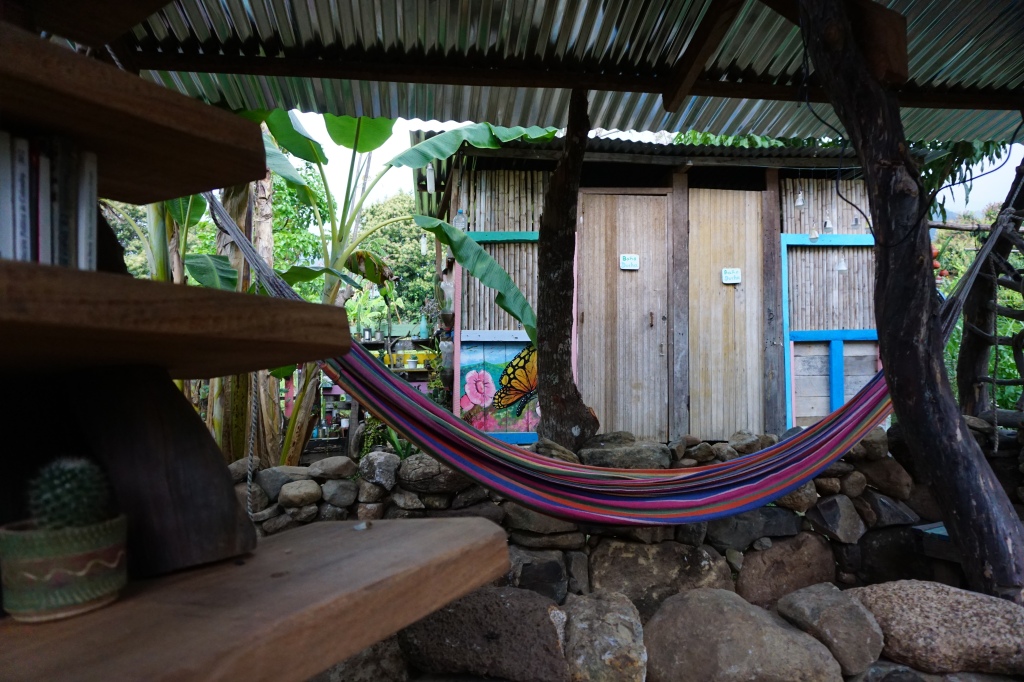
John helps you get information and reserve any activities you might want to do in Pueblo Bello. After a quick phone call, he found out that the locals that rent out bikes only had 3 available that day. There were 5 of us. John rented out two of his own bikes so that we could all take off together without a problem.
Biking in Pueblo Bello is just 5.000 pesos an hour. We spent three hours — 2 of which were spent at the river drinking and enjoying the water — exploring Pueblo Bello from top to bottom — literally. The majority of the ride through the town is downhill when heading towards the river and hiking towards the waterfall. The way back posed a problem for me since I had opted for two beers and we had stopped at an ice cream shop before going down to the river. I quickly got winded trying to fight my way up the rather steep hills. Then I started to feel dizzy and nauseous.
My friends helped me to get a bottle of water and a automoto taxi back, just as it started to rain really hard. I was more than relieved to unload the bike and leave it in the front so that I could lay down in a hammock and catch my breath. Once again, the host was graceful enough to return the bike for me without any hesitation.
Another thing to keep in mind about Pueblo Bello is that it rains pretty frequently, depending on the time of year, sometimes suddenly and heavily, especially during the rainy season. Rainy season starts around the end of February, so we are finally seeing an end to the months of drought typical of the dry season.
My poor friends had to book it to get back to the house where we rented the bikes in the rain. They returned their bikes, and we all convened for dinner and drinks on the campground. The rain fell hard, harder than I had seen since I left Louisiana, and lightning streaked the sky in a soothing yet intimidating way. There was no danger; this is typical of the rainy season.
I stayed up until the sun had completely disappeared, but once I ate, with the rain still coming down, I slid into my glamping cabin, slipped under the fluffy quilt and went straight to sleep, even as some of my friends stayed up to chat and drink Churro, a distilled ancestral liquor found in this region of Colombia.
I’ll end this with the peaceful memory of that cool night. The bedspread was just thick enough to keep me cozy and comfortable despite the low temperatures. The sound of birds is a constant symphony at Migracampi, one that lulled me to sleep and then woke me up early the next morning.
To be continued…. (leave some applause if you liked this review/check out my instagram!)
Day 2: The hike to La Tranquilidad and the Deluge that came after.
![Nómada [con] Rumbo](https://nomadaconrumbo.com/wp-content/uploads/2021/04/cropped-dsc07640.jpg)
